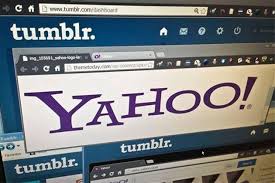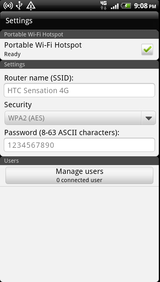PC World – Laptops used to be simple. Almost all of them had a clamshell design, with a display that folded onto the keyboard. You picked the laptop you needed based on factors like price, weight, and performance. But it’s different today: New form factors, different operating systems, and disparate user needs conspire to make choosing a laptop a complex chore.
Do core processor specs matter, or has system performance reached the point where users won’t even notice a 300MHz frequency bump? Should you buy a laptop at all, or would a tablet better suit your needs? I’ll answer all these questions and more as I explore the challenges of buying a laptop (or something like a laptop) in the age of Windows 8.
WATCH: Windows 8 video roundup
Define your needs and budget
Before you pull out your credit card, consider how you’ll be using your new machine. Perhaps you do a lot of business traveling, and carrying something lighter than your current 6-pound behemoth would improve your life on the road tremendously. Or maybe you’re looking for a shared family machine, or a laptop that you can hand off to a student to do schoolwork on. Or you might want a high-performance system that can deliver high frame rates in 3D games.
Let’s look at the main buying factors for each scenario.
Business laptop: If you’re a frequent business traveler, mobility and ruggedness are important laptop features for you. Consumer-grade laptops may look sleek and attractive, but many business-oriented units are built to absorb the shocks of constant travel. Hardcore performance is less important in this scenario than portability, sturdiness, and battery life.
Shared family PC: Many families used to share a small PC in the living room or family room. Desktop replacement laptopsgargantuan systems with 17-inch or larger screensoften fulfill that same role today. For many families, roomy screens and large hard drives outweigh such factors as top-of-the-line performance and battery life.
Student laptop: High school students may need laptops that support basic mobility, but not much elseand this helps keep the cost of the laptop low. Many college students need all-purpose machine that are more robust. Performance is a bigger consideration, too, but physical desk space is likely to be limited, so a smaller machine may make the most sense.
Gaming machine: PC gamers may be willing to accept more weight and less portability if the payoff is better performance. Such performance-oriented features as quad-core processors and high-end mobile GPUs require more-elaborate cooling technologies and bulkier cases, which in turn mean increased weight. The result can be a special-purpose laptop like the Razer Blade.
Regardless of your specific needs, make sure that you understand a laptop’s target user prior to buying it. Once you settle on the features you want, from most to least important, lock down a budget. Setting a budget will help you narrow down your choices. But make sure that your budget takes essential accessories into account. For example, students may need an external, portable hard drive for quick backups, and business users may want to spring for extended warranties with overnight replacements.
Finally consider whether you even need a laptop. Tablet sales have skyrocketed in the past couple of years, and for good reason: Tablets typically cost less than a full-fledged laptop, they’re much more portable, and they boot faster than most PCs. If you’re looking primarily for a mobile device for browsing the Web, watching video, and playing some light games, a tablet might fit the bill nicely.
Evolving form factors
Windows 8 has spurred a remarkable amount of innovation in laptop design. Some new laptops, such as the HP Envy TouchSmart Ultrabook 4, integrate a touchscreen into an otherwise standard clamshell design. Other, hybrid designslike Lenovo’s IdeaPad YogaA and Dell’s XPS 12use nifty conversion mechanisms to give users a touchscreen tablet and a laptop in a single physical package. Remember to keep a cautious eye on your budget, however. Windows 8 makes touch-capable displays extremely attractive, but adding touch technology to a machine increases its cost.
When considering one of the new hybrid designs, don’t lose sight of your needs assessment. If you’re a business traveler who makes frequent presentations to clients, a hybrid equipped with a touchscreen makes sense. Using a tablet and touch control to run a presentation is far easier than huddling around a clamshell and using its small trackpad.
But even if a hybrid PC looks great, make sure that it has the basics you need. For example, the Sony Duo 11 offers a good tablet experience, but its keyboard may not satisfy touch typists who have to do a lot of writing on their laptop.
Under the hood
Once you’ve clarified your needs and established a budget, you’re ready to dive into the world of internal components. Understanding what makes a laptop tick can help you choose your system wisely.
Processors
Intel processors that have the word “Core” in their name employ the company’s state-of-the-art CPUA architecture.A A
Ultrabooks and similar ultraportable laptop PCs use ultra-low-voltageA (ULV) CPUs. They’re the most power-efficient CPUs, meaning that they run cooler and can fit into systems with very thin cases. Intel ULV processors are often labeled with a “u”for example, the Core i5 3317u. You do forfeit some raw CPU performance, as the clock speeds of ULV processors aren’t especially high, and the ones sold today have only two processor cores.
Mainstream laptop CPUs of the type found in most all-purpose laptops offer better performance, but they also require more-effective cooling systems, which makes these systems heavier. High-end systems may carry quad-core CPUs, whose four CPU cores improve the performance of applications that can take advantage of them.
Another class of processor is the accelerated processing unit (APU). Built by AMD,A these CPUs have more-powerful integrated graphics engines than equivalentA Intel processors do. As a result, graphics-intensive tasks may run better on them, though their standard CPU performance is often lower. Systems configured with Intel CPUs may also have a separate GPU from Nvidia or AMD to boost graphics performance, albeit at the cost of increased weight and somewhat reduced battery life.




















